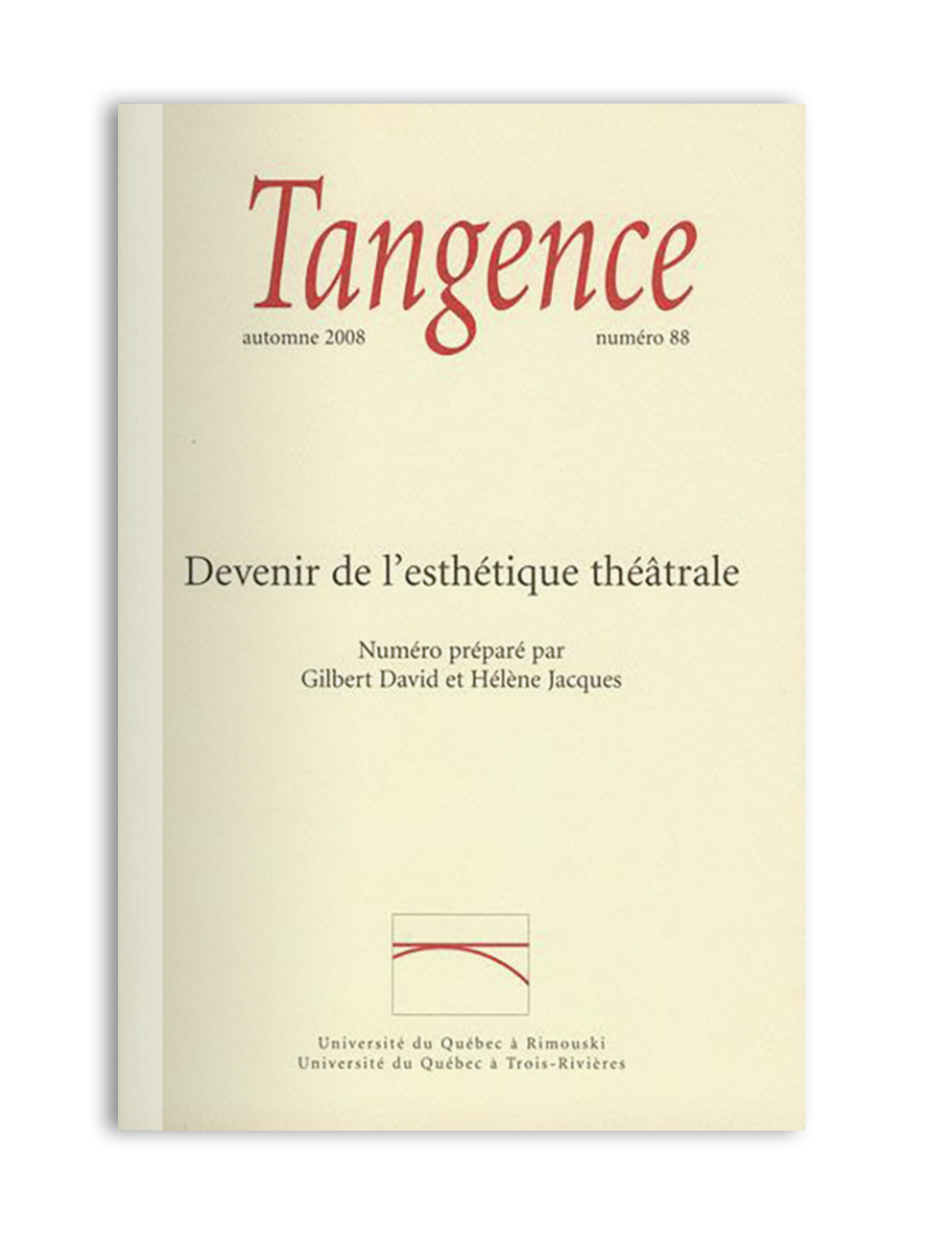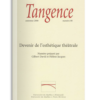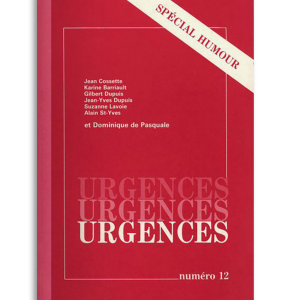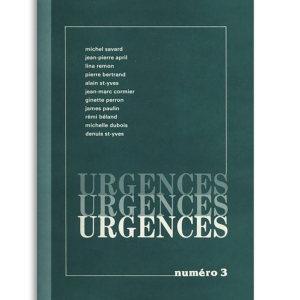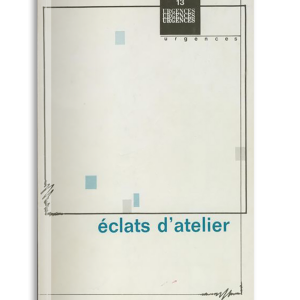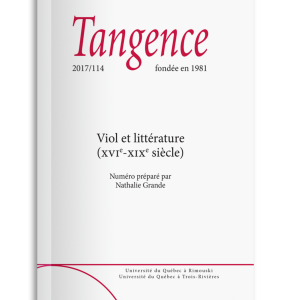N° 88, automne 2008
Devenir de l’esthétique théâtrale
Jean-Marie Apostolidès
Le théâtre de la frontalité
L’auteur oppose dans cet article l’esthétique traditionnelle et la conception contemporaine du théâtre. La première a dominé les pratiques théâtrales (écriture et mise en scène) entre le milieu du XVIIe siècle et la dernière partie du XXe siècle ; elle était fondée à la fois sur l’impérialisme de la perspective et le regard absolu, qui s’imposent l’un et l’autre aussi bien dans la science que dans les arts. Il s’agit d’une vision générale du monde. La conception contemporaine s’appuie sur les principes nouveaux de la frontalité qui implique un rapport différent au monde aussi bien qu’une nouvelle compréhension du monde. Nous tentons d’en cerner l’influence dans les domaines de la mise en scène et de l’écriture théâtrale d’aujourd’hui. Cette esthétique de la frontalité met en veilleuse la perception psychologique de l’homme au bénéfice d’une nouvelle conception, à la fois individuelle et mythologique. La frontalité nous paraît le facteur le plus important du renouvellement théâtral depuis vingt ans, en Europe comme en Amérique du Nord.
The theatre of frontality
In this article, the author opposes traditional aesthetics and the contemporary conception of the theatre. The former dominated theatre practices (writing and staging) between the mid-seventeenth and late twentieth centuries ; it was founded on the imperialism of perspective and on absolute sight, which were essential in science as well as the arts. At issue was an overall vision of the world. Today’s conception rests on the new principles of frontality, which involves a different relation to the world along with a new understanding of it. We aim to underscore its influence in the fields of contemporary staging and playwriting. This aesthetics of frontality highlights the psychological perception of man using a new conception, at once individual and mythological. We believe that frontality is the most important factor in drama renewal in the last twenty years, in both Europe and North America.
***
Christian Biet et Christophe Triau
La comparution théâtrale. Pour une définition esthétique et politique de la séance
Objet formellement et socialement hétéronome, le théâtre est marqué par le champ de forces que déterminent ses instances ; dans le présent éphémère de l’expérience théâtrale se joue une relation fondamentalement caractérisée par la contradiction, la tension, l’hétérogénéité, la multiplicité des points de vue, où s’effectuent une mise en place et une mise en jeu du commun, et un jeu de l’individuel par rapport à ce commun. Ce jeu et ce commun, le théâtre contemporain ne cesse d’ailleurs de les revendiquer, au risque parfois de l’autoréférentialité tautologique, ainsi que d’une conception de la communauté théâtrale qui ne renverrait qu’à un seul « partage » du même (la théâtralité). Le phénomène qui s’élabore dans la séance théâtrale nous semble plutôt relever d’une opération esthético-politique de l’ordre de la comparution : une comparution immédiate (parce que faite dans l’instant) et médiate (parce qu’il y a art) ; un champ de comparutions multiples, qui figurent et induisent des jugements multiples, mettant à nu dans le lieu théâtral la nécessité du lien social en même temps que la nécessité, en en prenant conscience, de le perturber ou de le questionner.
The theatrical appearance. For an aesthetic and political definition of the session
A formally and socially heteronomous object, the theatre is marked by the force field determined by those responsible for it ; the ephemeral present of the theatre experience involves a relationship characterized, basically, by contradiction, tension, heterogeneity and multiplicity of viewpoints, and in which the blocking and staging of shared experience develops along with the role of the individual in relation to this experience. Contemporary theatre, moreover, continues to claim responsibility for this staging and shared experience, sometimes at the risk of tautological self-referentiality as well as of a concept of theatre community that refers only to a single “sharing” of the same (theatrality). The phenomenon that develops in the theatre session appears, in our opinion, to be part of an aesthetico-political operation on the order of appearance ; an appearance that is immediate (because achieved in the moment) and mediate (because there is art) ; a field of multiple appearances that arrive and induce multiple judgments, laying bare in the theatre venue the need for the social link along with the need, as awareness of it develops, to disrupt or question it.
***
Liviu Dospinescu
Effet de présence et non-représentation dans le théâtre contemporain
Cet article explore les mécanismes de réception de certaines formes théâtrales qui semblent effacer l’expérience du sens pour plonger le spectateur dans l’expérience des formes pures de la scène. Ces formes sont pures en cela qu’elles sont des présentations plutôt que des représentations, autrement dit des formes vides de sens, c’est-à-dire qui ont perdu leur fonction sémiotique. Ainsi, au lieu de trouver un sens, le spectateur se contente des sensorialités par lesquelles ces présences scéniques se font sentir. Comment le spectateur peut-il encore trouver du plaisir au théâtre si le plaisir du sens lui est refusé ? Dans la mesure où la scène n’est plus le lieu de la représentation, mais plutôt celui de l’événement pur ou d’une simulation, l’expérience à vivre par le spectateur est alors celle du vécu phénoménologique même. Nous tenterons de montrer ici que l’expérience théâtrale contemporaine s’inscrit de plus en plus dans la voie de l’expérimentation des effets de présence et de vécus phénoménologiques, produits comme des simulations et censés être ressentis par les spectateurs comme des expériences virtuelles d’un univers autre, voire, parfois, d’une conscience autre.
The Effect of presence and non-representation in contemporary theatre
This article explores the reception mechanisms of certain dramatic forms that appear to erase the experience of meaning with the effect of plunging the spectator into the pure- form experience of the stage. These forms are pure in that they are presentations, in other words, forms devoid of meaning, that is, they have lost their semiotic function. Instead of finding meaning, therefore, the spectator is content with the sensory sensitivities that allow these stage presences to be felt. How can theatre-goers continue to find pleasure in the theatre if the pleasure of meaning is denied them ? Insofar as the stage is no longer the place of representation, but rather that of the pure event or of a simulation, the experience to be lived by the audience, then, is that of the phenomenological experience itself. Our aim here is to show that the contemporary theatre experience falls increasingly within the area of experimentation regarding the effects of presence and phenomenological experiences produced as simulations and intended to be felt by the audience as the virtual experiences of a universe that is other, and sometimes even of a conscience that is other.
***
Hervé Guay
Vers un dialogisme hétéromorphe
Cet article examine les transformations qui ont modifié en profondeur la création théâtrale depuis une trentaine d’années. En prenant appui sur la notion de dialogisme élaborée par Mikhaïl Bakhtine, l’étude cherche à montrer que le théâtre est passé d’un modèle dialogique dominé par la figure de l’auteur, puis du metteur en scène, à un dialogisme hétéromorphe qui fait place à une pluralité de voix et de langages. Dans cette perspective, beaucoup de créateurs contemporains préfèrent se centrer davantage sur les interactions qui se nouent entre les diverses composantes de l’événement théâtral et sur la relation spécifique à instaurer avec le public plutôt que sur les échanges des personnages. Le caractère interhumain propre à l’événement théâtral apparaît donc transformé, puisque le processus collectif de la fabrication du spectacle est mis en évidence dans la représentation elle-même.
Towards a heteromorphous dialogism
This article examines the transformations that have profoundly modified dramatic creation for about thirty years now. Based on the notion of dialogism developed by Mikhail Baktin, our study aims to show that theatre has moved from a dialogical model dominated by the figure of the author, then the director, to a heteromorphous dialogism that makes way for a plurality of voices and languages. In this perspective, many contemporary creators prefer to focus more sharply on the interactions forged between the various components of the dramatic event and the specific relationship to establish with the public rather than on the exchanges between the characters. The interhuman character specific to the dramatic event therefore appears transformed, since the collective process of staging the show is highlighted in the representation itself.
***
Catherine Naugrette
De la catharsis au cathartique : le devenir d’une notion esthétique
Depuis Aristote et jusqu’à aujourd’hui, qu’elle soit prônée, condamnée ou réhabilitée, la catharsis constitue une catégorie esthétique fondamentale qui se trouve au cœur de la représentation artistique en général et de la représentation dramatique en particulier. À partir de sa théorisation dans le texte de la Poétique aristotélicienne, et se fondant sur les principaux moments de son devenir théorique et dramaturgique au cours des siècles, cet article met en jeu les différentes problématiques théâtrales liées à cette notion. Il tente par ailleurs de repérer, au sein même du théâtre immédiatement contemporain, les traces encore vives du cathartique qui, sous forme de matériau agissant, continue à informer textes et représentations, dans leur fonctionnement et leurs effets les plus puissants. Qu’il s’agisse de la terreur, de la pitié ou de la reconnaissance, les matériaux cathartiques irriguent plus que jamais semble-t-il le théâtre, dans la mesure où le choc qu’ils provoquent répond à son désir de dire le monde et, inlassablement, de le questionner.
From catharsis to the cathartic : the evolution of an aesthetic notion
From Aristotle to the present day, catharsis, whether preached, condemned or rehabilitated, has been a fundamental aesthetic category that lies at the heart of artistic representation in general and dramatic representation in particular. Beginning with the theorization of catharsis in Aristotle’s Poetics, and focusing on the key moments of its theoretic and dramaturgical evolution down through the centuries, this article highlights the various dramaturgical issues associated with this notion. It aims, moreover, to identify within today’s contemporary theatre the traces, still fresh, of the cathartic which, in the form of a material that acts, continue to inform texts and representations regarding their functioning and their most powerful effects. Whether the issue is terror, pity or recognition, cathartic materials nourish the theatre more than ever, it seems, to the extent that the shock they provoke responds to the theatre’s desire to evoke the world and subject it to unrelenting examination.
***
Arnaud Rykner
Du dispositif et de son usage au théâtre
Comme l’hypocrisie aux yeux de Don Juan, le dispositif est un vice à la mode – du moins un terme utilisé aujourd’hui pour parler de la quasi-totalité des activités humaines, et en particulier du spectacle vivant. Notre article se propose d’interroger cette notion et son usage possible, sinon souhaitable, au théâtre, à partir des recherches qu’un groupe de chercheurs toulousains lui consacre depuis presque quinze ans. Loin de prétendre résumer en quelques lignes une notion d’une telle complexité, ni de structurer rigoureusement une réflexion qui mériterait à elle seule plusieurs volumes, il s’agira donc d’ouvrir quelques perspectives théoriques et bibliographiques. Parce qu’il permet de penser l’hétérogène de façon dynamique, sans rabattre la réalité sur un catalogue de formes hétéroclites, le concept de « dispositif » se révèle particulièrement à même de rendre compte des formes ouvertes de la théâtralité moderne, notamment de celles parfois regroupées un peu rapidement sous les notions de « théâtre postdramatique » ou de « théâtre postmoderne ».
On setting and its use in the theatre
Like hypocrisy in the eyes of Don Juan, setting is a fashionable vice – or, at least, a term used today to speak of the quasi-totality of human activities, and the living theatre in particular. Our article attempts to examine this notion and its possible – if not desirable – use in the theatre, based on the work of a group of researchers from Toulouse over the last fifteen years. Far from claiming to summarize such a complex notion in a few lines, or to rigorously organize a study that would require several volumes in and of itself, the aim here is to open some theoretical and bibliographical perspectives. Because it allows for a dynamic conception of the heterogeneous, without considering reality as a catalogue of heteroclitic forms, the concept of “setting” proves particularly apt to account for the open forms of modern theatrality, notably, those sometimes grouped too hastily under the notions “post-dramatic theatre” or “post-modern theatre.”

